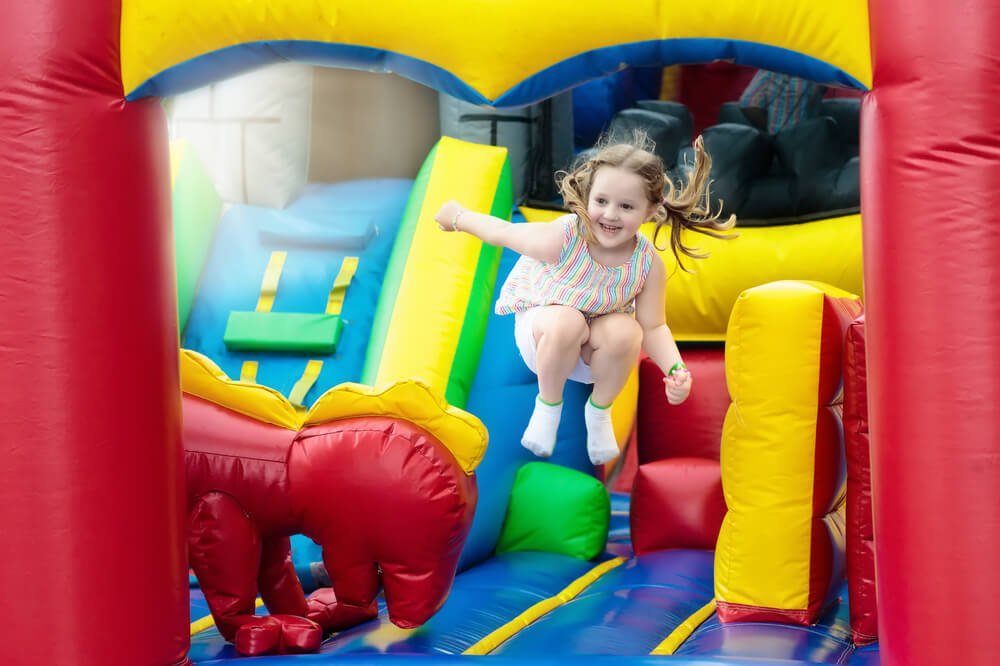
Following the recent bouncy castle tragedy in Tasmania we've received a number of queries from LGIS members. We're aware that leading into summer many of our members deliver events which may use either land or water borne inflatable devices.
Although the cause of the tragedy in Tasmania is still to be determined, it's a reminder of what can happen when things go wrong. Members are encouraged to familiarise themselves on the precautions that should be taken when inflatables are being used by your local government or in the community.
In general the following should be considered and remembered:
- Many amusement devices/structures may be considered a 'registered item/s of plant' and require a WorkSafe Certificate of Plant Registration.
- There are Australian Standards that relate to both land and water borne inflatables, under the class of amusement devices. These standards are considered within legislation.
- Even if you are engaging an amusement operator, they are still a contractor. It would be prudent to complete your own checks to be confident that the operator is compliant.
- Be aware of recommended safety practices when using inflatables.
The following advice comes from Safe Work Australia
Land-borne inflatable devices
Inflatable amusement devices can be a hazard if they are not set up and operated according to relevant instructions. Poor inflatable set-up or operation can lead to:
- the amusement device becoming airborne during strong wind gusts.
- the amusement device collapsing and trapping patrons.
- injury to patrons on amusement devices where they can move freely without supervision e.g. an inflatable device (continuously blown) like a jumping castle.
Inflatable devices should be:
- secured and anchored with anchor points provided according to the manufacturer's instructions and relevant technical standards.
- evacuated when wind gusts exceed the manufacturer's guidelines or when the wind gusts are over 40 km per hour.
- installed with suitable impact absorbing mats if they are in areas where patrons can fall off the unfenced platform of the inflatable e.g. entrance and exits.
- supervised at all times by people who are competent to operate the device safely.
- monitored so a device is not used at the same time by more than the recommended maximum number of patrons.
- monitored so electrical or other powered components of the inflatable cannot be interfered with by patrons, in particular children.
- patrons should be monitored so only those of similar size and weight are on the amusement device at the same time. This will reduce the risk of injury to smaller patrons. Somersaults, flips or tackling other patrons should not be permitted.
Water-borne inflatable devices
A water-borne inflatable device means an amusement device that is used on controlled water. For example, these devices may be in pools or as part of a ride where the inflatable is propelled by moving water. Patrons are not generally immersed in water at any time and are not made wet except from incidental splashing.
Close supervision is needed for patrons using water-borne inflatable devices because they can be more unstable and more difficult to control or anchor than land-borne inflatable devices. Operators should consider the ability of users to swim and supervision should also contemplate swimmers moving under the device. All these factors can contribute to the risk of injury and drowning.
Control measures should be put in place to prevent patrons being caught between the amusement device and other things like the pool edge, ladders or ropes.
For inflatable pool amusement devices pool operators should:
- provide adequate pool supervision for patrons
- encourage parent or guardian supervision to complement other pool supervision
- prepare and maintain emergency plans including procedures to deal with unexpected deflation, bad behaviour and suspected drowning, and
- hold emergency drills to test and practise emergency plans and procedures
More information
For advice and support on risk management practices please contact the LGIS risk team or your Regional Risk Coordinator.
If you have questions regarding your protection and cover talk to your LGIS Account Manager.
